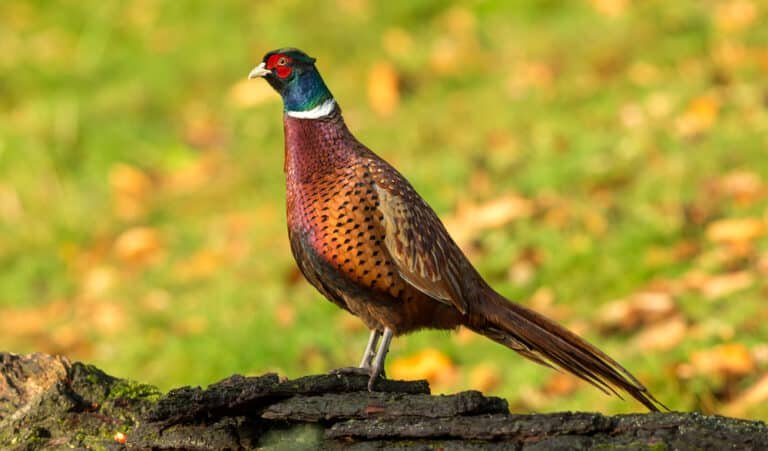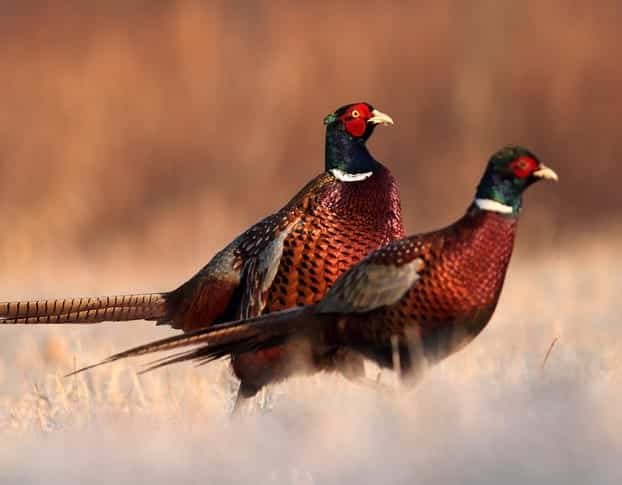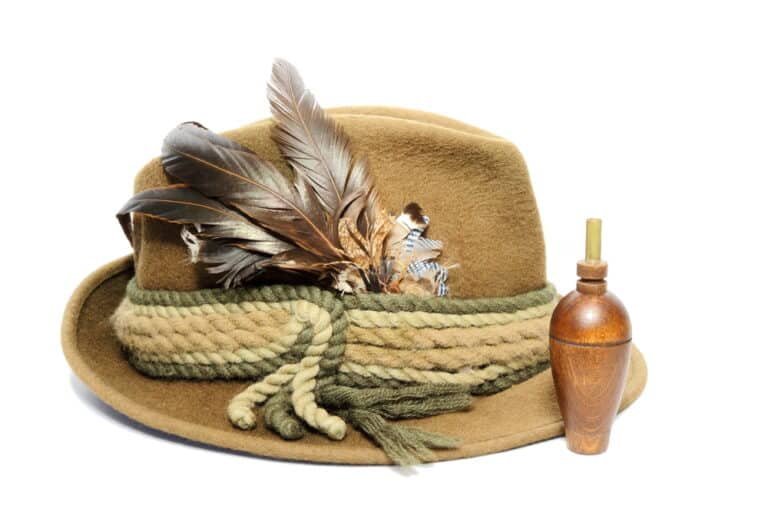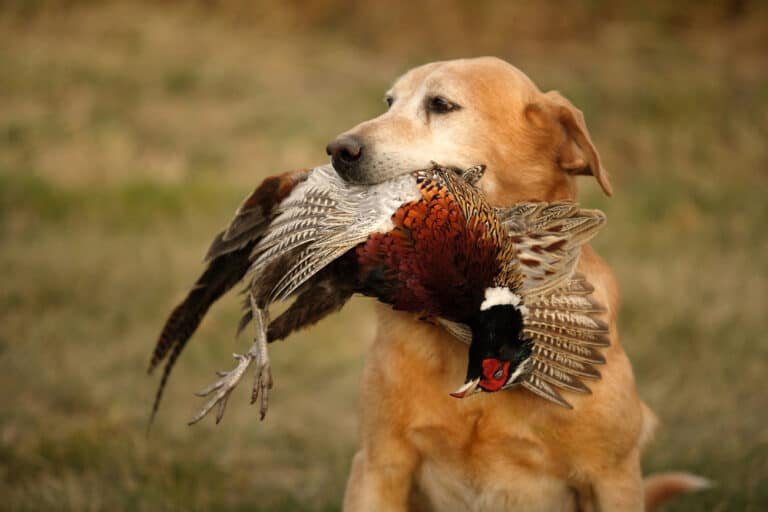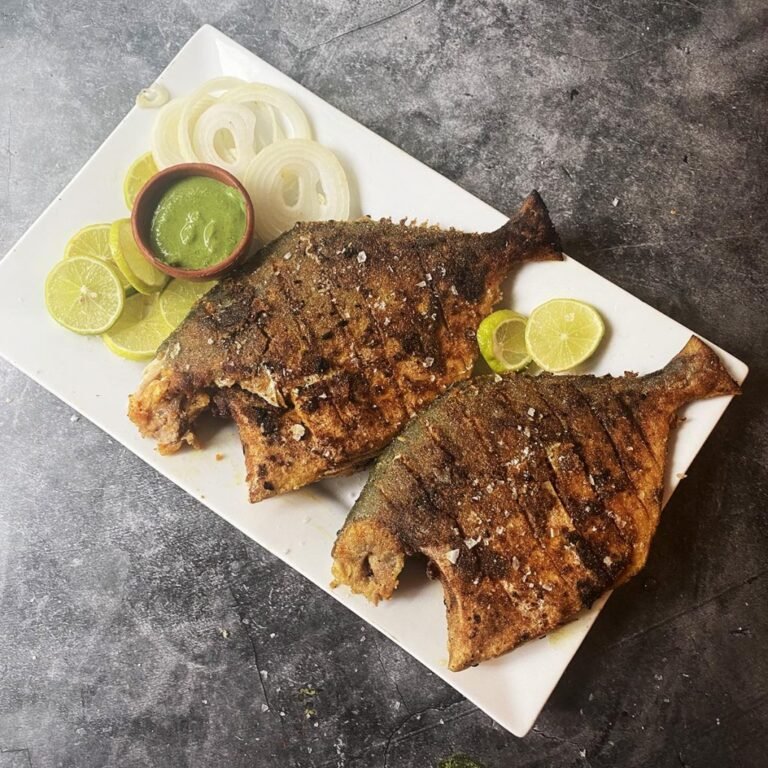Iowa Pheasant Hunting: The Best Heartland Hunting For You!
When it comes to outdoor pursuits, few activities capture the essence of tradition, skill, and camaraderie quite like hunting. And Iowa stands as a proud testament to this cherished pastime in the heartland of America, where sprawling landscapes meet a deep-rooted appreciation for nature’s bounties. In this blog we will discuss Iowa Pheasant Hunting.
With its diverse habitats and abundant wildlife, Iowa has long been hailed as a haven for hunters from both near and far. Among the myriad game species that grace its fertile fields and woodlands, none hold as prominent a place in Iowa’s hunting heritage as the majestic ring-necked pheasant.
Brief Overview of Iowa’s Rich Hunting Heritage
Iowa’s hunting heritage runs deep within the veins of its people. From Native American tribes who relied on hunting for sustenance to European settlers who found solace and sustenance in the untamed wilderness, hunting has shaped Iowa’s history and culture.
The state boasts a strong tradition of ethical hunting practices passed down through generations, fostering respect for nature and an intimate understanding of wildlife behavior. Whether pursuing waterfowl along the mighty Mississippi River or stalking deer amidst dense timberlands, Iowans have always cherished their connection with nature.
Importance of Pheasant Hunting in Iowa’s Outdoor Culture
While numerous game species find their place among Iowa’s outdoor pursuits, pheasant hunting is uniquely significant in the state’s cultural fabric. Introduced to North America in the late 19th century from Asia, pheasants quickly found fertile ground in Iowa’s expansive agricultural landscapes. The vibrant colors and elusive nature of these upland birds captured the imagination of hunters across generations.
Pheasant hunting became more than just a sport; it became an integral part of rural life in many communities throughout Iowa. Families, friends, and neighbors would gather each autumn to partake in this time-honored tradition.
Pursuing pheasants allowed one to test one’s skill and marksmanship and fostered a sense of camaraderie and shared experiences. From the excitement of flushed birds to the timeless stories exchanged around a crackling fire, pheasant hunting has woven itself into the tapestry of Iowa’s outdoor culture.
History of Pheasant Hunting in Iowa
Introduction of pheasants to North America and their spread to Iowa
The fascinating history of pheasant hunting in Iowa can be traced back to the introduction these colorful game birds to North America. In the late 1800s, Chinese Ring-necked Pheasants were brought overseas and released in Oregon and Washington for ornamental purposes. However, these resilient birds quickly adapted to the American landscape and spread across the continent.
The first successful introduction of pheasants to Iowa occurred around 1900 when a group of enthusiasts released them near Ames. Their adaptation skills were remarkable, finding suitable habitats within agricultural landscapes and thriving on a diet primarily composed of grains, seeds, insects, and wild vegetation.
Early pioneers and their impact on establishing pheasant populations
The early pioneers played a crucial role in establishing stable populations of pheasants across Iowa. Recognizing the potential recreational value and economic benefits of upland game bird hunting, these passionate individuals actively worked towards creating suitable habitats for pheasants.
They believed preserving natural areas alongside agricultural practices was essential for sustaining healthy populations. Many farmers began incorporating diverse habitats into their land management practices by leaving strips of grasslands or planting shelterbelts as a protective cover for nesting birds.
Conservation efforts and the role of organizations like Pheasants Forever
Conservation efforts have been instrumental in preserving and promoting healthy pheasant populations throughout Iowa. Organizations like Pheasants Forever have dedicated themselves to habitat improvement projects to enhance nesting cover, provide food sources, create shelterbelts, restore wetlands, and implement sustainable land management practices beneficial for wildlife and farmers. Their tireless work has contributed to habitat conservation and raised awareness about preserving the state’s hunting heritage.
Through partnerships with landowners, government agencies, and volunteers, these organizations have successfully increased pheasant populations while fostering a sense of stewardship among Iowa’s outdoor enthusiasts. Overall, the history of pheasant hunting in Iowa is a testament to the resilience of the birds and the individuals who have championed their conservation.
From humble beginnings as introduced game birds to becoming an integral part of Iowa’s outdoor culture, pheasants have flourished due to the efforts of early pioneers and dedicated conservation organizations. Through their commitment to habitat preservation and sustainable land management practices, these passionate individuals have ensured that future generations can continue to enjoy the thrill and tradition of Iowa pheasant hunting.
The Ideal Habitat for Pheasants in Iowa
A detailed description of the landscape features that attract pheasants
Pheasants thrive in certain landscapes that provide them with the necessary resources for survival and reproduction. In Iowa, their ideal habitat is a mix of croplands, grasslands, and wetlands. These diverse landscapes offer a variety of food sources, cover, and nesting sites crucial for sustaining healthy pheasant populations.
Croplands, grasslands, and wetlands are key components.
Croplands attract pheasants as they provide abundant food sources such as corn, soybeans, wheat, and other grains. These crops supply the birds with ample nourishment and offer excellent cover during the early part of the hunting season when crops are tall. Grasslands are equally important for pheasant habitat as they provide nesting cover and protection from predators.
Native grasses like switchgrass and big bluestem create dense stands that shield nests from view and protect chicks as they grow. Wetlands are vital for providing water sources to pheasants throughout their life cycle and as natural filtration systems for runoff from adjacent agricultural lands.
Shelterbelts, food plots, and nesting cover for optimal habitat diversity
To further enhance the habitat suitability for pheasants in Iowa, shelterbelts (rows or groups of trees) are crucial. These windbreaks act as barriers against harsh weather conditions while offering additional cover during winter when other vegetation may be sparse. Food plots are meticulously cultivated areas where plants attractive to pheasants are grown specifically to supplement natural food sources during lean periods or enhance nesting success rates by providing insects for chicks during their critical growth stages.
Optimal pheasant habitat diversity includes ample nesting cover, such as dense brushy areas, tall grasses, and weedy patches that conceal nests and protect them from predators. Creating a landscape with these key components is essential in maintaining healthy pheasant populations in Iowa.
By preserving and enhancing croplands, grasslands, wetlands, shelterbelts, food plots, and nesting cover, pheasant habitat quantity and quality can be improved significantly. This benefits the pheasants and ensures a thriving ecosystem that supports other wildlife species dependent on these habitats.
Popular Pheasant Hunting Areas in Iowa
Overview of regions known for excellent pheasant hunting opportunities
Iowa is renowned for its exceptional pheasant hunting, drawing avid hunters from afar. With its diverse landscapes, the state offers a variety of regions where hunters can experience thrilling pheasant encounters.
These areas provide abundant cover, food sources, and suitable habitats, making them ideal for sustaining healthy populations of ring-necked pheasants. Whether you are an experienced hunter or a novice looking to test your skills, Iowa offers something for everyone.
Northwest Iowa: Plymouth, Lyon, and Osceola counties
Northwest Iowa has long been hailed as one of the prime pheasant hunting destinations in the state. Counties such as Plymouth, Lyon, and Osceola offer expansive grasslands dotted with crop fields and wetlands — an enticing combination providing excellent pheasant habitat.
The region’s rolling prairies and patches of dense cover create optimal conditions for these iconic birds to thrive. Many public hunting grounds in this area provide ample opportunities to explore and seek out elusive roosters.
North Central Iowa: Kossuth, Palo Alto, and Emmet counties
In North Central Iowa lies another exceptional pheasant hunting region encompassing Kossuth, Palo Alto, and Emmet counties. This area boasts a mosaic landscape of agricultural fields intermingled with CRP (Conservation Reserve Program) lands and wildlife management areas.
The fertile soils support diverse crops like corn and soybeans that attract yearly pheasants. The rolling hillsides adorned with shelterbelts enhance the habitat quality by providing additional cover from predators while acting as windbreaks during harsh winters.
Southwest Iowa: Adair, Union, and Cass counties
Traveling to Southwest Iowa unveils a treasure trove of pheasant hunting opportunities in counties such as Adair, Union, and Cass. Here, the landscape transitions from the expansive prairies of the north to a mixture of woodlands, grasslands, and gently rolling hills.
Pheasants find refuge in undulating terrain and are attracted to areas where they can find suitable nesting cover and ample food sources, like cornfields and native grasses. The peaceful countryside immerses hunters in nature while pursuing elusive roosters.
Central Iowa: Story, Boone, and Hamilton counties
Central Iowa is not only known for its vibrant cities but also for its excellent pheasant hunting opportunities. Counties such as Story, Boone, and Hamilton offer a unique blend of agricultural landscapes interspersed with pockets of public hunting areas.
The fertile soils here support an array of crops that provide forage options for pheasants year-round. Additionally, tree-lined creek beds winding through farmlands create natural corridors for birds to navigate while adding diversity to the overall habitat structure.
Iowa is blessed with numerous regions that provide exceptional pheasant hunting opportunities. From the rolling prairies of northwest Iowa to the diverse landscapes in central parts of the state, each region has its distinct charm that attracts local hunters and visitors alike.
These remarkable habitats protect pheasants from predators while offering plentiful food sources throughout their lives. As you embark on your next pheasant hunting adventure in Iowa’s popular regions mentioned above or beyond, remember to respect private lands and follow all regulations set forth by the state wildlife authorities – ensuring sustainable enjoyment for future generations.
Regulations and Licensing for Pheasant Hunting in Iowa
Explanation of state regulations regarding bag limits, seasons, etc.
The Iowa Department of Natural Resources (DNR) regulates pheasant hunting in Iowa to ensure the sustainability of pheasant populations and maintain a fair hunting experience. The bag limit refers to the maximum number of pheasants an individual hunter can harvest daily. In Iowa, the daily bag limit for pheasants is set at three birds per day.
This restriction allows hunters to enjoy the thrill of the hunt while preserving healthy pheasant populations for future generations. Furthermore, hunters must be aware of the hunting season dates set by the DNR.
The season typically begins on the last Saturday in October and runs through early January. However, it’s important to note that these dates are subject to change each year, so it’s advisable to consult with the DNR or visit their official website for up-to-date information on specific season dates.
Overview of licensing requirements for residents and non-residents
Residents and non-residents must obtain appropriate licenses from the Iowa DNR to participate in pheasant hunting in Iowa. For residents aged 16 and above, a valid hunting license is required. Residents under 16 years old may hunt without a license if an adult with a valid license accompanies them.
Non-residents are welcome to experience Iowa’s renowned pheasant hunting but must acquire a separate non-resident small game hunting license. This license includes permission to hunt other small game species as well.
Additionally, all hunters must possess an upland game bird fee paid habitat stamp along with their respective licenses. Hunters must familiarize themselves with all applicable regulations before embarking on their hunting journey, as failure to comply may result in penalties and legal consequences.
The Iowa DNR offers comprehensive resources online, including detailed hunting regulations that can be easily accessed for a complete understanding of all requirements. By adhering to these regulations and licensing requirements, hunters can ensure a responsible and enjoyable pheasant hunting experience in the beautiful state of Iowa.
Phenomenal Pheasant Hunting Techniques
The importance of scouting before the hunt
Scouting is an essential aspect of successful pheasant hunting. Before venturing into the field, take the time to scout the area thoroughly. Look for signs of pheasants, such as tracks, feathers, and roosting areas.
Please pay attention to their feeding and watering patterns. By understanding their habits and preferred locations, you can strategically plan your hunt and increase your chances of finding pheasants.
Tips on effective field strategies to maximize success
Employing effective field strategies can significantly affect your success rate when hunting pheasants. One key strategy is to walk quietly and slowly through grasslands or along shelterbelts, watching for any movement or flushing birds. Be cautious not to make sudden movements or loud noises that may startle the birds away.
Alternatively, some hunters prefer driving techniques, where beaters gently push pheasants toward waiting hunters, creating shooting opportunities. Experiment with both methods to find the best for you in specific conditions.
Walking vs. driving techniques
Both walking and driving techniques have their merits in pheasant hunting, but they serve different purposes depending on the terrain and circumstances. Walking allows hunters to cover more ground while carefully inspecting habitat features that attract pheasants; it is particularly effective when targeting specific areas where birds are likely hiding or feeding.
On the other hand, driving techniques involve strategically positioning hunters around a field while utilizing human beaters or flushing dogs to drive pheasants toward waiting guns. This method can be highly effective when hunting large expanses of open land.
Useful equipment such as dogs or decoys
The right equipment can significantly enhance your chances of a successful pheasant hunt. Utilizing well-trained hunting dogs like Labrador Retrievers or English Setters can help flush out and retrieve downed birds. These dogs have an innate ability to locate and track pheasants, making them invaluable companions in the field.
Additionally, decoys can be employed to attract birds into shooting range. Realistic decoys with lifelike movements can lure in curious pheasants, increasing your opportunities for a clean shot.
Conclusion
Pheasant hunting in Iowa is a cherished tradition that offers both excitement and camaraderie among hunters. You can significantly increase your chances of a successful hunt by understanding the importance of scouting before the hunt and implementing effective field strategies such as walking or driving techniques, coupled with using valuable equipment like hunting dogs or decoys.
So grab your gear, explore Iowa’s beautiful landscapes, and embark on an unforgettable journey filled with joyous moments and memories that will last a lifetime. Happy hunting!

